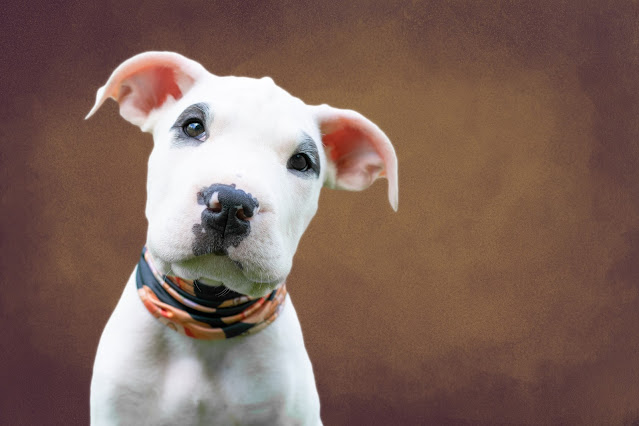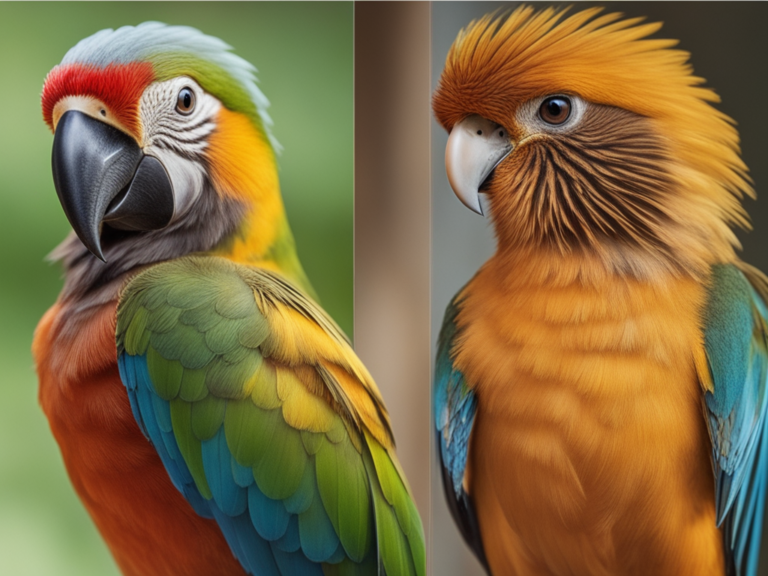Unusual Appearances: Dogs Without Necks

Dogs Without Necks: Have you ever heard of dogs without necks? It may sound like an unbelievable theory, but it is actually a fascinating reality. These unique canines, affected by a genetic condition called short spine syndrome, defy the conventional appearance of their species. With their hunched backs and the absence of a visible neck, they capture the curiosity and imagination of dog enthusiasts worldwide. But what other surprising adaptations do these dogs possess? Join us as we delve into the captivating world of dogs without necks and uncover the extraordinary stories behind their unconventional appearances.
The Fascinating World of Neckless Dogs
Short spine syndrome, a rare genetic condition, results in dogs having hunched backs and reduced or missing necks. This syndrome affects the spine of dogs, causing their backs to be curved and their necks to be shorter than normal. It is believed to be caused by genetic mutations resulting from inbreeding. Dogs with short spine syndrome may also have other physical abnormalities, such as short or spiraled tails, and fewer ribs.
Short spine syndrome can be found in various breeds and mixed-breed dogs all over the world. It is a condition that is present from birth, and affected dogs may face health issues throughout their lifetime. The shortened neck in these dogs can impact their ability to eat properly and go to the bathroom. They may require special accommodations, such as elevated food bowls and modified litter boxes, to ensure their comfort and well-being.
Despite their unique appearance and physical challenges, dogs with short spine syndrome can still live active and happy lives. With proper care and attention, they can overcome their health struggles and live a long life. It is important for owners to provide regular veterinary check-ups, monitor their dogs’ weight and mobility, and make adjustments to their environment as needed.
Unconventional Canine Appearances
Unconventional canine appearances encompass a wide range of unique physical traits that deviate from the typical dog anatomy. One such unconventional appearance is observed in dogs with short spine syndrome, a rare genetic condition. Dogs with short spine syndrome display physical deformities, with a hunched back being a prominent characteristic. This condition affects the spinal column, causing it to shorten and resulting in a distinct appearance.
Short-spine dogs, like the famous Pit Bull with Short Spine named Quasi Modo, have sloped backs, short necks, and elongated jaws. Additionally, they may have no tails, bobbed tails, or tails that are shorter than normal. Despite their unusual appearance, dogs with short spine syndrome can live active and happy lives. In fact, some of these dogs have reached nearly 14 years of age.
Individual short-spine dogs have captured the hearts of many around the world. Notable examples include Cuda, Quasi, Mojo, Pig, and Cleo, each with their own unique story and background. These dogs are fortunate to have caring owners who provide them with the love and care they need. For instance, Quasi Modo’s owner, veterinarian Virginia Sayre, has been instrumental in raising awareness about this condition.
While short spine syndrome may present challenges for these dogs, such as difficulty in eating, going to the bathroom, and scratching themselves, they are resilient. They have proven that physical differences do not define their ability to enjoy life and bring joy to those around them. Through their unusual appearance, dogs with short spine syndrome have become ambassadors for embracing diversity in the canine world.
Surprising Adaptations in Dogs Without Necks
As we explore the surprising adaptations in dogs without necks, it’s important to understand the unique physical traits that result from short spine syndrome, a rare genetic condition affecting the spinal column. Dogs with short spine syndrome often have sloped backs, short necks, and elongated jaws. This condition is not limited to any specific breed and is believed to be caused by inbreeding, resulting in a genetic mutation.
Despite their physical differences, dogs with short spine syndrome can live active and happy lives. They have been found all over the world, and some have even lived until nearly 14 years old. Individual dogs with this condition, such as Cuda, Quasi, Mojo, Pig, and Cleo, have unique stories and live with loving owners who provide them with the care they need.
Although dogs with short spine syndrome may face challenges, such as difficulty eating, going to the bathroom, and scratching themselves, with proper care, they can lead a long and healthy life. It is important to note that some dogs with this condition, like Watson and Cricket, have lived long lives, while others, like Molly Faith, have passed away, but they are remembered and missed by their owners.
It is fascinating to see how these dogs have adapted to their condition, and it is reminiscent of the rare human condition, Klippel Feil syndrome. Despite the rarity of short spine syndrome in dogs, their ability to thrive and adapt is truly remarkable.
Exploring Short Spine Syndrome in Dogs
Short Spine Syndrome in dogs is a genetic condition that affects the development of the spine, resulting in a shorter-than-normal length. This condition can lead to various health implications, including spinal deformities, mobility issues, and potential neurological problems. Understanding the genetic causes, as well as providing appropriate care and support, is crucial in ensuring the well-being of dogs affected by Short Spine Syndrome.
Genetic Causes of Short Spine
Genetic abnormalities associated with inbreeding are believed to be the cause of short spine syndrome in dogs, a condition characterized by a sloped back, short neck, and smaller stature that can impact a dog’s mobility and skeletal structure. This condition is not limited to specific breeds and can occur in dogs of various breeds and mixed breeds. Short spine syndrome in dogs is similar to Klippel-Feil syndrome in humans, both being rare conditions present from birth that cause spinal abnormalities.
It is important to note that dogs with short spine syndrome can live active and healthy lives, with some living into their teens, and the condition does not necessarily shorten their lifespan. However, there is currently no known cure for short spine syndrome in dogs, and treatment primarily focuses on managing associated health concerns and providing supportive care to help affected dogs live a long and comfortable lives.
Health Implications and Care
While short spine syndrome in dogs does not necessarily shorten their lifespan, it is important to understand the health implications and proper care required for dogs with this congenital condition. Dogs with short spine syndrome may face various health issues throughout their lifetime. They may experience difficulties with eating, going to the bathroom, and scratching due to their unique spinal structure.
Although there is currently no known cure for this condition, supportive care and treatment can help manage associated health concerns. These dogs may be prone to joint abnormalities and altered bone structures, which can require additional attention and care. Despite these challenges, dogs with short spine syndrome can lead active and healthy lives with the right care, love, and support from their owners.
Health Issues of Dogs With Short Spine Syndrome
Dogs affected by short spine syndrome may experience a range of health issues due to spinal abnormalities, impacting their daily activities and overall well-being. This condition, known as short spine syndrome, is a rare condition that affects dogs of various breeds. It is characterized by a shortened spine, resulting in a hunched back and less flexible spine.
One of the known health issues associated with short spine syndrome is the fusion of vertebrae. This fusion can lead to stiffness and limited mobility, making it difficult for affected dogs to perform basic tasks such as eating, going to the bathroom, and scratching themselves. Additionally, the abnormal spine can cause joint abnormalities, further impacting mobility and posture.
Despite these challenges, it is important to note that short spine syndrome does not shorten a dog’s lifespan. With proper care and management of associated health concerns, affected dogs can live active and healthy lives. Supportive care, such as physical therapy and pain medication, may be necessary to alleviate discomfort and improve mobility. Preventive measures, such as providing a soft and supportive bed, can help minimize the risk of developing pressure sores and other complications.
Regular veterinary check-ups are crucial for monitoring the dog’s condition and addressing any potential health issues promptly. It is important to work closely with a veterinarian who is knowledgeable about short spine syndrome to ensure the best care for your dog. By providing the necessary support and attention, you can help your dog with short spine syndrome live a fulfilling life despite their unique challenges.
Unique Stories of Short-Spined Dogs
Now let’s explore some unique stories of dogs with short spines. These dogs come from a variety of breeds and have different health considerations and care needs. Understanding the specific challenges and joys of owning a dog with a short spine can provide valuable insights for both owners and those interested in learning more about this rare genetic condition.
Breeds With Short Spines
Breeds with short spines exhibit unique stories, showcasing their resilience and adaptability despite their genetic condition. Short spine syndrome is not limited to a specific breed and is believed to be caused by inbreeding. One notable breed with short spines is the Pit Bull With Short, known for its sloped backs, short necks, and elongated jaws. Another breed that can be affected by this condition is the Baboon Dog, characterized by their unusual appearance and shorter spines.
Despite the challenges they face, dogs with short spines can still live active and happy lives. Organizations like Secondhand Hounds are raising awareness about this condition and providing proper care to improve their quality of life. By understanding the unique needs of these dogs and providing the necessary support, pet owners can ensure they thrive and enjoy a fulfilling life.
Health Considerations and Care
With proper care and attention, dogs affected by short spine syndrome can lead active and healthy lives. Despite their unique condition, short-spined dogs can enjoy a life expectancy similar to that of other dogs. The oldest known short spine syndrome dog lived until nearly 14 years old, proving that this condition is not a death sentence. While dogs with short spine syndrome may experience health issues such as spinal problems and joint abnormalities, most are not in frequent pain.
Although there is no known cure for short spine syndrome, treatment focuses on managing associated health concerns and providing supportive care. It is heartwarming to see the love and care given to these dogs, as evidenced by the numerous posts shared by their owners. By providing the proper care, short-spined dogs can thrive and live fulfilling lives.
Providing Care for Dogs Without Necks
To provide optimal care for dogs without necks, it is crucial to understand their unique needs and adapt your caregiving approach accordingly. Dogs with short spine syndrome, also known as Baboon Dogs, are special dogs with a condition that affects their spine. This syndrome is not limited to any specific breed or size of a dog, and it results in a sloped back, short neck, and elongated jaws. Due to their unique anatomy, these dogs require specific care to ensure their well-being.
One important aspect of providing care for dogs without necks is managing their eating habits. Due to their short necks, they may have difficulty reaching food and water bowls placed at typical heights. It is recommended to use elevated feeding stations to make it easier for them to access their meals. Additionally, monitoring their weight is crucial, as excessive weight can put a strain on their spine and exacerbate their condition.
Grooming is another essential aspect of caring for dogs without necks. These dogs may have difficulty scratching themselves due to their limited mobility. Regular brushing and checking for any skin irritations or infections are necessary to keep their coat and skin healthy. It may also be helpful to provide them with scratching posts or specialized tools to help alleviate any discomfort.
Exercise is vital for dogs with short spine syndrome, but it should be done with caution. Their unique spine structure may make them more prone to injuries. Low-impact activities such as short walks and gentle play sessions are recommended. Regular veterinary check-ups are also crucial to monitor their overall health and address any potential issues.
Dogs Without Necks Frequently Asked Questions
What Condition Does a Dog Have With No Neck?
If your dog has no neck, they may have a condition called short spine syndrome. This rare genetic mutation can affect various dog breeds and cause spinal abnormalities. With specialized care, including physical therapy, symptoms can be managed, improving their quality of life.
Why Does My Dog Not Have a Neck?
Your dog may not have a neck due to a genetic condition called short spine syndrome. Inbreeding can cause this unique appearance. Dogs without necks can adapt and live active lives, but special care may be required.
What Is Dog Kyphosis?
Dog kyphosis, also known as canine spinal deformities, is a condition characterized by an abnormal curvature of the spine. Treatment options include physical therapy, management strategies, and understanding the causes of short spine syndrome. Certain breeds are more prone to developing kyphosis, which can impact a dog’s quality of life.
What Is the Life Expectancy of a Dog With Short Spine Syndrome?
Dogs with Short Spine Syndrome can live up to nearly 14 years old, debunking assumptions about a shortened life expectancy. With proper care and love, they can lead active and healthy lives.
Conclusion
In conclusion, dogs with short spine syndrome, often referred to as “dogs without necks,” possess unique and unconventional appearances due to their fused and compressed vertebrae. Despite their physical differences, these dogs can lead active and fulfilling lives with proper care and support from their owners. While there is no cure for this genetic condition, understanding and providing the necessary care can help these dogs thrive and enjoy a happy existence. Their stories serve as a testament to the resilience and adaptability of these remarkable creatures.








